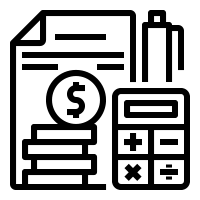What is Insurance Publisher?
The Insurance Publisher is responsible for checking each individual's insurance registration, and assessing the level of risk involved and determining whether the registration is accepted. Insurance Insurers must decide whether an insurance application or registration can be accepted. Even if it can be accepted, he must also know, what are the rules and conditions of acceptance. An Insurance Insurer must also assess the risk of insuring someone or a company based on the possibility of a claim being filed.
Minimum education level
PT3
SPM
STPM
Diploma
Degree
Average Salary
Example of a Job Position
Task
Knowledge
Administrative
Knowledge of administrative procedures and systems, such as managing words, managing documents and records, stenography and transcription, designing forms, and other office procedures and terminology.
Education and Training
Knowledge of principles and methods in designing curriculum, training, teaching, and instruction for individuals and groups, as well as measuring the effects of training.
Mathematics
Knowledge of arithmetic, algebra, geometry, calculus, statistics, and their applications.
Customer and Personal Services
Knowledge of principles and processes to provide services for customers and personal. This includes assessing customer needs, meeting service quality standards, and evaluating customer satisfaction.
Computers and Electronics
Knowledge of circuit boards, processors, chips, electronic equipment, computer hardware and software, including applications and programming.
Administration and Management
Knowledge of business and management principles including strategic planning, resource allocation, human resource modeling, leadership techniques, production methods, and coordination between people and resources.
Medical Science and Dentistry
Knowledge of the information and techniques needed to diagnose and treat human wounds, diseases, and deformities. These include symptoms, alternative treatments, drug properties and interactions, and preventive health measures
Skills
Active Learning
Understand the implications of new information for basic decision making and problem solving now and in the future.
Talking
Talk to others to convey information effectively
Critical Thinking
Using logic and reasoning to identify the strengths and weaknesses of alternative solutions, conclusions, or approaches to the problems handled
Consideration and Decision Making
Consider the shortcomings and advantages of potential action choices to choose the most appropriate action.
Capability
-
1
Oral Expression - The ability to communicate information and ideas when speaking, so that others can understand what is being conveyed
-
2
Written Expression - The ability to communicate information and ideas in writing so that others can understand
-
3
Inductive Reasoning - The ability to combine pieces of information to form general rules and conclusions (including finding relationships between seemingly unconnected events).
-
4
Oral Understanding - The ability to listen and understand information and ideas conveyed through words and oral sentences
-
5
Written Understanding - Ability to read and understand information and ideas conveyed through writing






